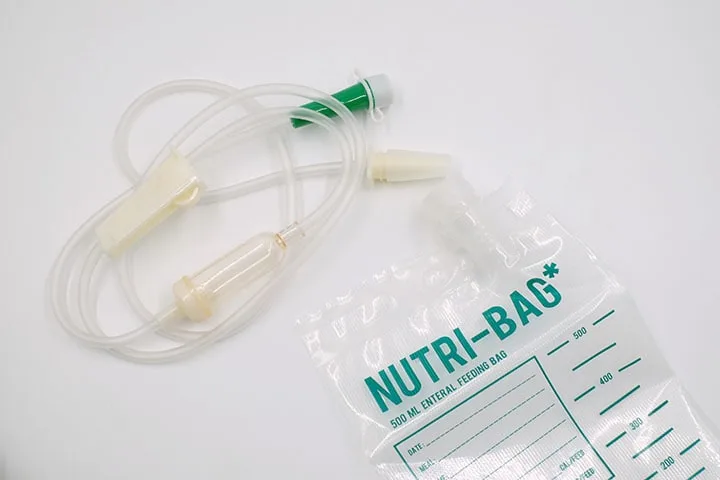Feed Pumps: Selecting Size and Setting Feed Rate

Those using enteral feeding pumps range from adults with esophageal cancer to premature newborns. Because there is such a wide variety of reasons and patients that use them, when it comes to feeding pumps, selecting sizes and setting feed rates is both a challenge and an absolute necessity.
Pump Size
Pump size can refer to the size of the pump itself or its carrying capacity. The weight of a pump does matter somewhat when patients are going to be actively moving or are particularly young. However, for our purposes, we are focusing on selecting a pump with the proper carrying capacity.
Dose Sizes
When you look at the max capacity of a pump, your first thought should be, “Will this pump be able to hold enough food or formula to feed this patient?” Those who need larger amounts of nutrition will need a pump with a larger carrying capacity than those with smaller caloric needs. Going back to our initial examples, the adult with esophageal cancer will likely need a larger pump than a newborn.
While some medical pumps mostly cater to one side of the spectrum or the other, there are also pumps that support both larger and smaller feed bags. These pumps are especially recommended if you need a pump that you can use on both pediatric and adult patients, or if you have a patient whose caloric needs might increase or change over time.
Feed Rates
Feed rate refers to the speed at which you administer the desired amount of nutrition over a given amount of time. This, along with the total amount of nutrition and the time period for administering it, is determined by the doctor. However, in certain circumstances doctors will determine what is the best and most accurate feed rate.
A Helpful Equation
Even if you don’t have the exact feed rate, calculating the rate isn’t difficult if you know the dose and the amount of time it is administered over. Simply use this equation: Dose/Time=Rate, with dose set to milliliters and time set to hours. If a patient requires 400ml over the course of 4 hours, the rate would be 100 ml/hr.
Factor in Hang-Time
In cases where a patient needs to receive food or formula over a longer time period, you may need to consider hang time when calculating the feed rate. This refers to the amount of time that the feeding formula can be kept in the pump before it should be refrigerated. For instance, infant formula should only hang in a feed bag for up to four hours. So, if you have an infant on a feeding tube who needs 40ml over the course of eight hours, you would need to divide the time into two four-hour increments in order to calculate the correct feed rate.
Correctly selecting the size and setting the feed rate on feeding pumps is essential to providing exceptional care to some of your medical facility’s most vulnerable patients. Be sure your medical facility reviews this information with your staff regularly.
